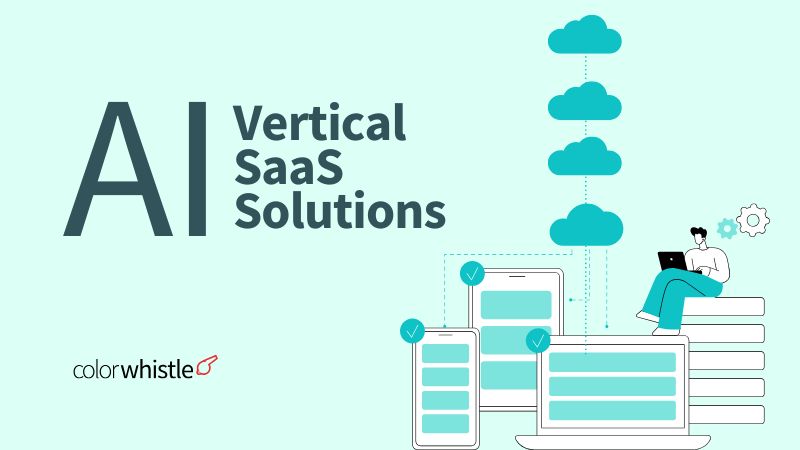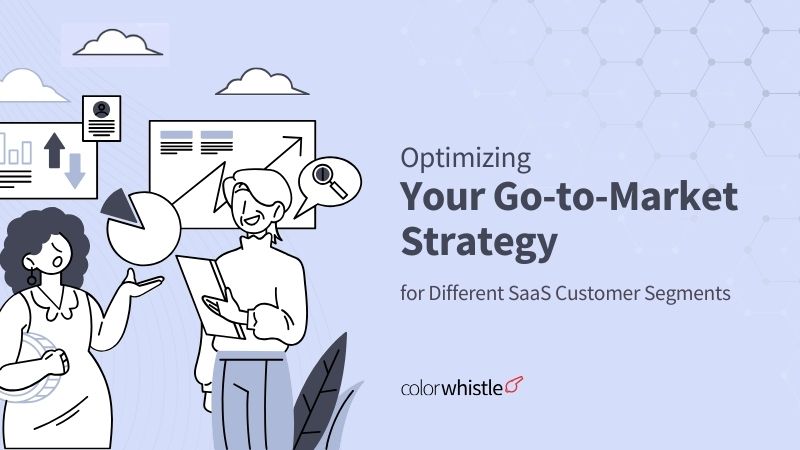Launching a new product in the SaaS industry requires more than just building an exceptional solution—it demands a well-defined Go-to-Market (GTM) strategy. This strategy serves as a roadmap to guide your product from development to successful market adoption. Below is an in-depth guide to GTM strategies for SaaS companies, derived from a detailed analysis of various expert sources.
Team up with a trusted digital marketing company that knows how to implement Go-to-Market strategies tailored to your SaaS business. With the right experts by your side, you’ll be set for unstoppable growth!
What is a Go-to-Market (GTM) Strategy?
A GTM strategy is a detailed plan outlining how a company will deliver its product to the target market. It includes identifying target audiences, positioning, distribution channels, and the best ways to achieve a competitive advantage. For SaaS companies, an effective GTM strategy is crucial as it helps streamline the marketing, sales, and product alignment to ensure that the right audience is reached with the right message at the right time.
Why is a GTM Strategy Important?
A robust GTM strategy can significantly reduce time to market and help avoid common pitfalls such as miscommunication between teams or an ill-defined product-market fit. Without a clear plan, businesses risk inefficient use of resources, poor market reception, and ultimately, failure to scale.
Types of Go-to-Market Strategies for SaaS
Product-led Growth (PLG)
In a PLG strategy, the product drives acquisition, conversion, and retention. Users are encouraged to explore the product themselves through freemium models or free trials, often leading to viral growth. PLG has been a dominant model in SaaS, and 66% of SaaS companies utilize this strategy to encourage seamless user onboarding.
Sales-led Strategy
This traditional approach involves a sales team actively engaging with prospects. Companies like Salesforce and HubSpot use dedicated sales teams to drive customer acquisition through personalized outreach and detailed demonstrations. This model is more suited for SaaS products with higher price points and complex integrations, where direct human interaction is essential for conversions.
Marketing-led Strategy
In this model, marketing campaigns take center stage in driving growth. SaaS companies like Asana and Trello use content marketing, SEO, and social media campaigns to generate awareness and leads. These companies focus on top-of-the-funnel marketing activities to nurture prospects over time until they are ready to convert.
Also Read
Key Components of GTM Strategy for SaaS Companies
A GTM strategy is a blueprint that outlines how a company brings its product to the market. It encompasses several components, including product positioning, audience targeting, pricing models, distribution channels, and the sales process.
Identifying and Defining the Target Audience
The first step in any GTM strategy is to define the target market. Your product isn’t for everyone. Failing to define your audience can lead to wasted marketing efforts and low conversion rates. This focus helps optimize marketing efforts and personalize the user journey.
Crafting Your Unique Value Proposition
Once you know whom you are targeting, the next step is to communicate why your product matters to them. Clearly articulating the unique value that your product provides to your target audience is critical.
Product-Market Fit
Ensuring your product solves a real market problem is the core of product-market fit. A SaaS company’s product-market fit is essential because, without it, even the most well-executed GTM strategies will fail. The product must provide clear value and resonate with user needs.
Choosing the Right Pricing Model
Pricing is more than just assigning a cost to your product. Pricing is a key aspect of your GTM strategy, especially for SaaS companies, where subscription-based pricing is common. However, it’s important to choose a pricing model that aligns with your business goals and target customers’ willingness to pay.
Establishing the Right Marketing Channels
Identifying the right marketing channels is key to reaching your audience. Your GTM strategy must outline how you will create awareness and attract potential customers. Selecting the right marketing channels is essential to drive qualified leads to your product.
For example, freemium models and free trials can be promoted heavily across these platforms to build user interest.
Developing a Strong Sales Strategy
While some SaaS companies rely entirely on marketing to bring in leads (Product-Led Growth), others use a mix of inbound sales teams and direct outreach. Understanding how to integrate your sales process into the customer journey is vital for converting potential leads into paying customers.
Real-time Examples of SaaS Companies with GTM Strategies
HubSpot’s Inbound Marketing
HubSpot is a prime example of how inbound marketing can be an effective GTM strategy. They created content-rich blogs, webinars, and courses to attract marketers looking for solutions. HubSpot’s use of content to educate users and generate leads resulted in sustainable customer acquisition.
Slack’s Product-Led Growth (PLG)
Slack adopted a product-led growth approach, allowing users to sign up and explore the product for free. By making the onboarding process seamless and focusing on in-product collaboration features, Slack turned users into champions who promoted the product within their teams and networks. This viral growth model helped Slack capture a large user base early on.
Dropbox’s Referral Program
Dropbox’s referral program is a classic GTM example, where users were rewarded with extra storage space for referring others. This simple yet effective strategy led to a surge in users and created a viral loop that minimized customer acquisition costs while encouraging users to actively engage with the platform.
Zoom’s Freemium Strategy
Zoom employed a freemium model with limited features in its free tier, targeting individuals and small businesses. When the product proved its value, users naturally upgraded to premium tiers for advanced functionalities. This GTM strategy helped Zoom capture market share quickly, particularly during the rise of remote work.
ConvertKit’s Personalized Onboarding
An email marketing platform for creators used a personalized onboarding process tailored to different user types (bloggers, podcasters, etc.). This reduced friction in the sign-up process and ensured users saw immediate value, boosting engagement and long-term retention.
What are the Metrics to be Tracked in a GTM Strategy?
Tracking the right metrics is essential for measuring the success of a SaaS Go-to-Market (GTM) strategy. Key metrics include:
- Customer Acquisition Cost (CAC) — How much it costs to acquire each customer. Lower CAC indicates a more efficient marketing strategy.
- Customer Lifetime Value (CLV) — The total revenue generated from a customer during their lifecycle, crucial for profitability analysis.
- Churn Rate — The percentage of customers leaving your service, is critical for understanding retention issues.
- Conversion Rate — The percentage of leads converting into paying customers.
- Net Promoter Score (NPS) — A measure of customer satisfaction and loyalty
Also Read
Things to Avoid With a GTM Strategy for SaaS Companies
When crafting a Go-to-Market (GTM) strategy for a SaaS product, there are several critical mistakes to avoid:
- Launching without ensuring your product fits market needs leads to low adoption. Focus on validating your product with real users before scaling.
- Not listening to early customer feedback can result in missed opportunities for product improvement. Continually iterate based on user insights.
- Targeting too broad an audience can dilute your marketing efforts. Define your Ideal Customer Profile (ICP) and focus your messaging.
- Complex or unclear pricing can confuse potential customers. Ensure your pricing aligns with customer expectations and value perception.
- Disjointed sales and marketing teams can lead to inconsistent messaging. Ensure both departments are aligned on goals and strategy.
Every SaaS company should develop a GTM strategy tailored to its unique product, market, and customer base. Whether you choose a product-led, sales-led, or marketing-led strategy, the ultimate goal is to deliver value to your customers in a way that aligns with their needs. By understanding key components like target audience, pricing, and customer acquisition channels, and by learning from successful SaaS companies, your GTM strategy can set you up for long-term success. By continuously refining your approach based on real-time metrics, SaaS companies can achieve sustainable growth and customer retention.
Each company’s GTM strategy will differ based on its product, audience, and market. However, the foundational principles outlined above will help guide you in creating a robust and flexible GTM plan that can adapt to the ever-changing SaaS landscape.
Stroll through our ColorWhistle pages to discover our tailored services. Ping us or call us at +1 (919) 234-5140, and we’ll be on it like paint on a canvas! Our services are as unique as your business — let’s make magic happen together!
What’s Next?
Now that you’ve had the chance to explore our blog, it’s time to take the next step and see what opportunities await!





